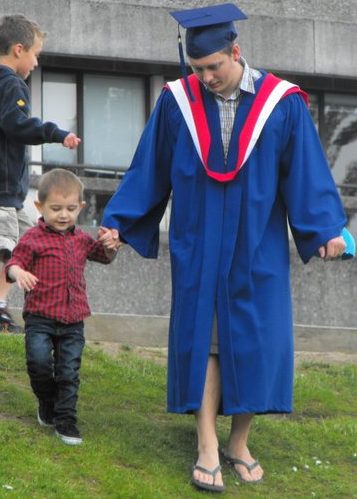
Yi ji. (2004) . Cover of Eppur Si Muove [online image]. Retrieved from https://www.flickr.com/photos/72185939@N06/7007818533/
Competency Identifier
Learner provides exceptional evidence of their ability to be meta-cognitively reflective in the face of theory and research, through well-chosen artefacts and well-articulated explanations.
Education Technology 510
“Master of Technology”
One of my earliest media productions for the program was for Education Technology 510: The Design of Technology-Supported Learning Environments. We were tasked with creating a media production that was a reflection of our journey to come to enroll in UBC’s Masters of Education Program. I chose this artefact because upon reflection I could see how far I came in my thinking about the significance of the program. I am able to look back at my early motivations and compare them to my new outlook. Learning to reflect on my values and beliefs in light of relevant theory and research has taught me more about pedagogy and myself as a teacher than all of my previous education combined. It is essential to see where my thinking was and to recognize how far it has come over the course of the program. For example, taking a unitI I had previously taught and reconfiguring it to reflect important educational theories such as Universal Design for Learning and Constructivism has helped me learn to build purposeful and effective units Reflecting on this artefact has show me how far my media production skills have come since I started this program
Education Technology 500
“Methodological Critique”
One aspect of Education Technology 500: Research Methodologies in Education was to critique different research methods to determine the ethical implications and decide how the method fit the task at hand. Through a careful analysis I was able to draw conclusions about suitable research methods for future research projects. From this critique I was able to reflect on on my findings, consider the ethical implications and suitability of different methods and decide that a triangulation mixed methods design for my research proposal was required. Learning how researchers choose their methods for their research and how heavily ethical considerations play a role, has been a considerable asset moving forward in my career. I have draw on this experience when researching different education programs to use with my students, to choose professional development readings to read, and which workshops to attend.
“Research Proposal: high school students’ perception of distributed learning, a mixed methods study”
Education Technology 500: Research Methodologies in Education was one of the core courses and for a good reason. Learning to critique educational research and methodology was one of the most empowering aspects of this program. Learning to decipher legitimate research methods from popular education research is an invaluable skill. My research proposal is significant for a few reasons. First, working to identify a contemporary and legitimate area of interest for a research project was a great way to begin to sift through the conversations going on about education all over the world. My research proposal looked at “High School Students’ Perception of Distributed Learning, “an area with limited research. Much of the relevant research I was able to track down was looking at post-secondary, not secondary. I developed a mixed method approach to study the problem. By working through the ethical issues surrounding the different research methods I was able to start pinpointing the possible limitations of each research method. Second, shortly after completing this course I accepted a job teaching at a distributed learning school. Going from a bricks and mortar school to a DL school was a significant challenge. This proposal gave me a really great insight into the differences and how the two are perceived.
